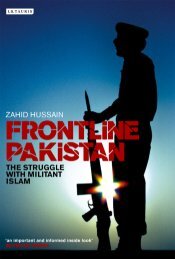Who Owns Pakistan - Yimg
Who Owns Pakistan - Yimg
Who Owns Pakistan - Yimg
Create successful ePaper yourself
Turn your PDF publications into a flip-book with our unique Google optimized e-Paper software.
Dawood lost Karnaphuli Paper Mills, Karnaphuli Rayon, a most modern jute mills,<br />
Dawood Shipping and host of trading and warehousing facilities. Adamjee lost six<br />
tea gardens in Sylhet and six industrial units including their biggest jute mills in<br />
Asia while Jalil, ranked fourth by Lawrence White lost five units and was left with<br />
only one unit in West <strong>Pakistan</strong>.<br />
Bawany lost Latif Bawany Jute Mills, Habib Ahmad Haji (Aragwala) lost Arg Ltd<br />
Chittgong and a splinter Monnoo group lost Olympia Textile Mills at Tongi. It<br />
must be purely for nostalgic reasons that fifteen years after their return to<br />
<strong>Pakistan</strong>, Monnoos incorporated a company with the same name, now listed on<br />
Karachi Stock Exchange.<br />
Atla group lost Honda Motorcycle Plant in East <strong>Pakistan</strong> " reducing me to pauper<br />
overnight and forcing me to shift from a Bunglow to a Flat ", group chairman<br />
Yusuf Sherazi said in an interview.<br />
Economic history books and researchers have talked only about the impact of<br />
East <strong>Pakistan</strong> debacle on big business while, in fact thousands of small and<br />
medium sized businessmen were affected by the seperation of East <strong>Pakistan</strong>.<br />
After the seperation, the Bangladesh govt nationalized 260 units belonging to<br />
non-Bangalis, and with assets exceeding Rs 105 million each while several<br />
hundred smaller and medium sized units abandoned by the people of West<br />
<strong>Pakistan</strong> origin were sold to the natives. But, a remarkable feature of<br />
nationalization in the newborn state was that the industrial undertakings of<br />
Khojas and Bohras were not touched.<br />
" Not all foreign non-Bangali bourgeois's were affected and state control was not<br />
extended to enterprises which belonged to dealers from merchant Muslim class<br />
of Khojas and Bohras", according to Yuri Gangsovak in an article " Social<br />
structures in Bangladesh".<br />
The seperation of East <strong>Pakistan</strong> was preceded by years of social and political<br />
unrest during which several leading industrialists, foreseeing the coming events,<br />
moved lock stock and barrels to West <strong>Pakistan</strong>. In less than two decades some<br />
of them, like Saphire-Gulistan, Fecto, Monnoos, Chakwal and Rupali were to join<br />
the fraternity of the top industrial families.<br />
" My brothers realized many years before 1971 that East <strong>Pakistan</strong> would one day<br />
be independent. From 1968 onwards they had stopped living there (and<br />
investing) and had concentrated their investment in West <strong>Pakistan</strong>", said<br />
Jehangir Monnoo in retrospect in an interview with the weekly, The Friday Times.<br />
Chakwal group moved to West <strong>Pakistan</strong> from East <strong>Pakistan</strong> in 1971 and<br />
machinery ordered for a proposed textile factory in East <strong>Pakistan</strong> was delivered<br />
to West <strong>Pakistan</strong> and onward to Chakwal for a spinning factory. This textile mill<br />
13













